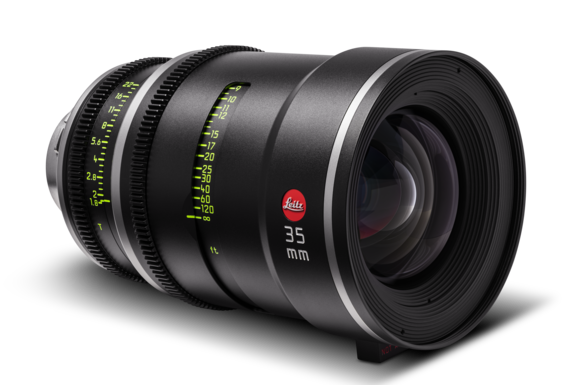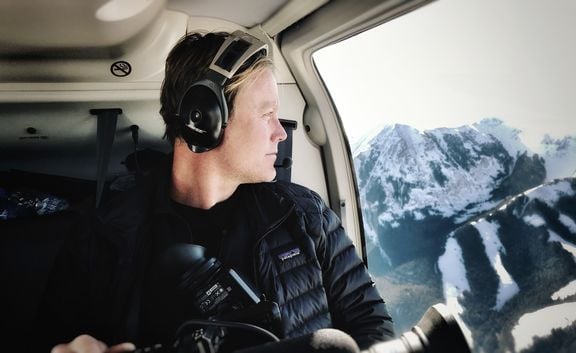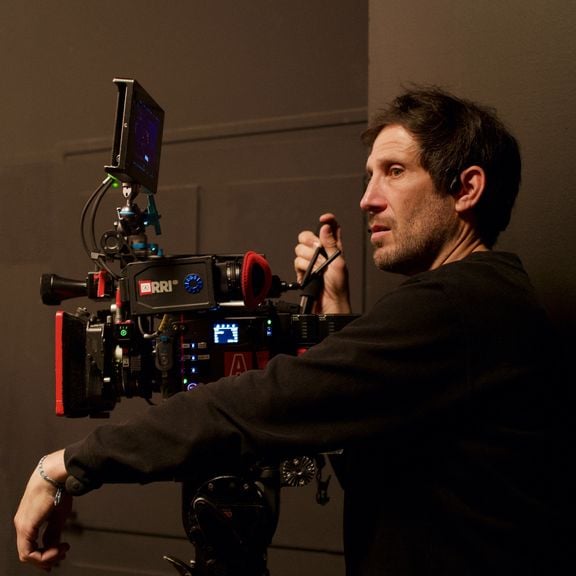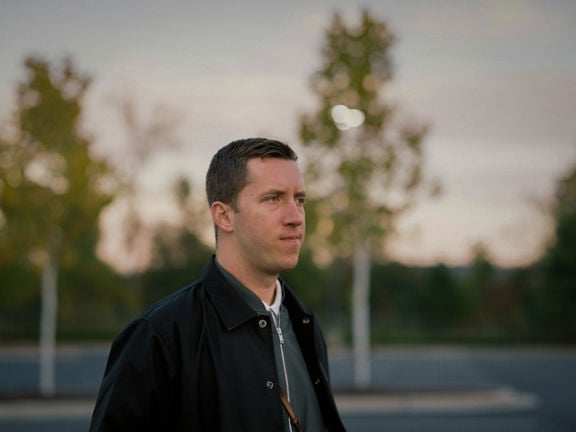Christian Sebaldt, ASC on FINAL DESTINATION: BLOODLINES
Final Destination: Bloodlines (2025)
Final Destination Bloodlines, directed by Adam Stein and Zach Lipovsky, follows a college student who’s recurring nightmare convinces her that Death is coming for her family, leading her to seek out the one person who might be able to help her save herself and her loved ones. Cinematographer Christian Sebaldt, ASC, chose LEITZ PRIMEs to capture the action in this latest addition to the hugely popular, long-running franchise from New Line Cinemas.
Seth Emmons: Final Destination Bloodlines is the 6th film in the Final Destination franchise. As the cinematographer, what obligations did you feel to the preceding films and where did you have room to make something new?
Christian Sebaldt, ASC: Before I interviewed for this project I watched all five movies three times, including the behind-the-scenes extras. The formula introduced in the first film is pretty genius. It is a very original idea and was set up in such a clever way to become a franchise. There are a couple elements that you have to stay true to.
The characters have to be grounded in the real world. The actors are not Hollywood mega-stars because they’re meant to represent everyday people. We had some really, really good actors. Being grounded means that when the out-of-this world bad things happen there is a shock to the audience. But these movies are not about blood and gore, so when something happens you only see it for a split second and then move on.
The goal is mostly not to telegraph the big actions. They should come out of nowhere. The audience is watching good looking people interacting on a beautiful set and then BOOM! They gasp, hopefully giggle a little, and we move on immediately. There is one scene in the film where we turned it around. A character is doing something stupid and you see them getting deeper and deeper into a bad situation. The anticipation just keeps building and building. So, we did play with that theme a little bit.
How did the desire to create a realistic look and not to over-stylize the film translate into your equipment choices?
From the beginning we knew we needed a visually high production value because it was a New Line Cinema / Warner Bros. studio film with a wide global theatrical release. The reality of the franchise doesn’t ask for weird looks or indie-feeling sequences with crazy visuals and colors. A beautiful image was the main goal, of course I can't take full credit for the end result as it has to do with sets, wardrobe, hair and makeup, all the departments really.
When it came to the equipment the most important thing for the directors and me was the lenses. Don’t tell the camera manufacturers, but all their cameras record beautiful images. They’re all so sophisticated that what is important now is the lens, how it translates light to the sensor. You can obviously tweak it a bit in post, but the initial capture has to be right.
Keslow Camera in Vancouver supported us with the full camera package. We scheduled a full day of testing with first AC Tyler Woeste and our DIT Mark Allan, our beautiful background artists and the many different sets of lenses I had researched. We had Christmas lights in the background, a hot backlight, good contrast, a nice little test scene setup. We went through lenses for about half the day and then Court Weeks from Keslow suggested the LEITZ PRIMEs. I didn’t have them on my list because I was looking for something a little edgy and out of the ordinary.
When we put the LEITZ PRIMEs on I can’t even describe what happened except we all sighed and went “Wow!” They looked so good. How the background went out of focus, how the Christmas lights looked, how it held the hot edge of the back light, the organic focus roll-off. We stopped testing after that.
We took the full set from 18mm to 180mm but did supplement with some wider lenses. We had the ARRI Ultra Prime 8R, a 100mm Macro and a 10mm, but that was it for primes. When we started shooting we learned that the 40mm has a great close focus and is just technically astonishing, so we used it for a lot of close ups. We had planned to use macro lenses for some shots but decided to use the 40mm for some of those as well. They really checked so many boxes for us.
The film opens with a big sequence that takes place in the 1960s and I had planned to use another set of lenses for the period footage. The moment we saw the LEITZ PRIMEs we decided we would use those for the period scenes as well and create the difference through colors and warmth. That was it. Testing was done.
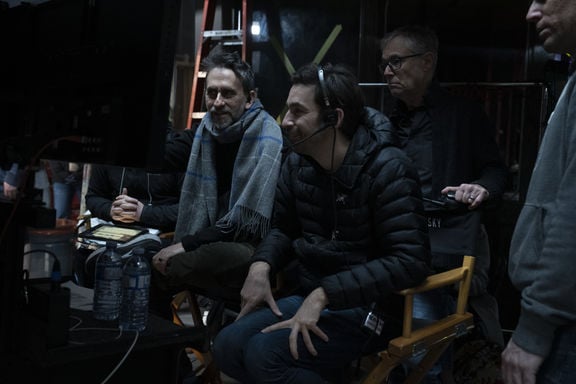
Other than the 40mm, were there any other focal lengths you gravitated towards?
The directors and I all like wide lenses and didn’t mind using a wide for a close up as long as it doesn’t distort. The LEITZ PRIME wides, the 18, 21 and 25mm, had no distortions and were gorgeous. We would be following actors closely, maybe they were turning or spinning around, and we catch them looking at something. With the wide lenses you have a lot of visual drama and the audience feels very engaged. I enjoy the wide lens close-up shot on a really good actor as you’re moving perspective and everything changes. To me it’s very exciting.
We used the long lenses to throw the backgrounds out of focus, and they were beautiful as well. You have to have the full set. You pick the lens depending on what you want to tell the audience at that moment.
Did you use any zooms?
From the very beginning we wanted to make it a prime lens movie because we enjoy the look and consistency of beautiful primes lenses. I think you get a better movie in the end that way as opposed to staying on zooms just for convenience. It can look like bad TV. We stayed on primes as much as possible, but there are times you need zooms.
My favorite is the Angenieux Optimo Ultra 12X 36-435mm T4.2 (in full format), which has an astonishing range. When you need a really tight shot but don’t want to be in the way of the other cameras you can put that on and be 10 feet away and still get very tight. Or you can go to 36mm and see the whole place. For flexibility you can’t beat it. We used the Angenieux for all the shots coming out of or going into our characters’ eyes, a Final Destination signature shot. We also had a few smaller zooms as well, mostly for crane shots so we could be flexible. You have to have a few zooms on a movie like this just to save the DP’s butt here and there.
How did shooting the LEITZ PRIMEs for period work go?
I wish I could say that I had worked out the period look months in advance and everyone was proud of me for that. [laughter] The truth is we fell into the look when we shot tests on the first set on the LED volume. It quickly becomes a massive VFX sequence in a large restaurant set with 360° windows. The volume was set to daylight and so was my camera, but all the built-in lighting, which there was a lot of, was tungsten.
We’re all looking at the image and it has that warm glow from all the practicals. It looked quite romantic. We all immediately agreed that was the period look. We’d found it in the same way we’d found the lenses; it just presented itself to us and we were open to it.
That’s something I really enjoy about filmmaking in general, the moments that catch you by surprise. A cool camera move, an unexpected performance, an in-camera trick that saves money in post, etc. These moments give everybody so much joy. I love that about our business.
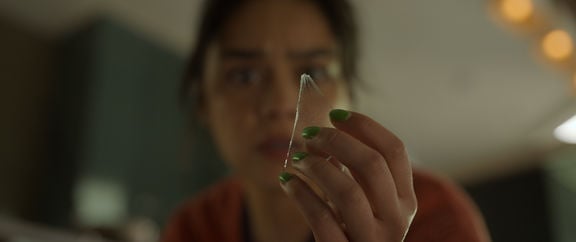
I always love the topic of happy accidents. How would you describe your balance between prepping, shot listing, and storyboarding, but also being open to finding things in the moment?
The two directors on this film, Adam Stein and Zach Lipovsky, were extremely well prepared, more than anybody else I've worked with in my long career. Every scene that was not just very basic dialogue sitting at a table was meticulously storyboarded. And the big sequences that Final Destination is famous for where a ton of stuff is happening, those had multiple iterations of storyboards. Our VFX Supervisor Nordin Rahhali had 3D previs created for the complex opening sequence and supervised the whole creation of it, done for us by Digital Domain.
Even with all that preparation, the directors were very flexible to shape the scene in the most exciting way or to simplify the coverage. Sometimes the actors would make suggestions. Sometimes we would find ways to combine two or three shots to speed things up. Even changes in camera movement or camera speed. They were open at all times.
How was it working with two directors? Have you done that before?
I had never done it on a big film. My first time was with Adam and Zach doing some additional photography for their film Freaks. You might think it wouldn’t work, but Adam and Zach complement each other so well. For example, Adam might give some notes to the actors. That will give Zach an idea. He’s not going to change Adam’s direction, but he may add to it in an interesting way. They have worked on separate projects in their careers, and they may come from different viewpoints, but their ideas always combine to elevate the moment. I really enjoyed it. It was a great experience.
Tell me about the LED volume.
For the first huge VFX sequence we used a custom-built volume by Pixomondo, over 200 feet long and 24 feet tall. It was huge. Our restaurant set was circular, almost 100 feet in diameter, surrounded by 11 feet tall windows and a full ceiling. Massive. We wanted it to feel real and if we had used a blue screen outside the windows, we wouldn’t have had the reflections from the outside world that the volume provided. We used a slightly smaller LED volume stage outside Vancouver called Versatile Media for some car interiors as well to help with the schedule. We only had 45 days for principal photography, later we added another five.
There was another set we wanted to shoot in our volume, but it would have taken two weeks to tear down the big set and rebuild the smaller one. It wouldn’t have been a smart use of time,` so we used the Versatile Media volume as we did for the car interiors. We added another challenge by trying to create a setting sun inside the restaurant set on the volume. Gaffer Sean Rooney put a remote-controlled Cineo R15 LED spotlight in an opening we created in the volume and with some tweaking, we perfectly blended it into the LED volume image on camera.
During prep in 2023 we were told that one couldn’t put a movie light inside the volume and make it look like the sun. We were also told high-speed shots will probably not work. We proved both wrong. We shot intense action at 48 fps, as well as 96 fps on the volume without issues.
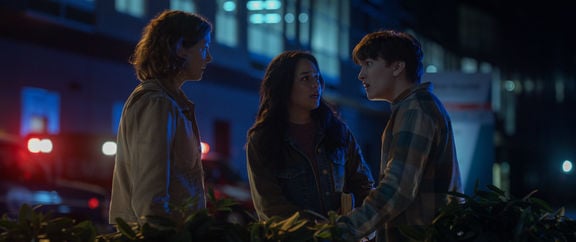
Which cameras did you use?
Our main cameras were a bunch of Sony VENICE 2s. We wanted the flexibility of shooting at really high ISOs, if needed, for depth of field (focus) and very low-light settings. The images were beautiful, no question about it. We had several for the A unit. We had a 2nd unit some days and they had one or two as well.
I always bring some Blackmagic cameras too. I know their cameras very well and they cut really, really nicely with the VENICE 2. We had one of the Blackmagic URSA Mini Pro 12Ks and two of the Pocket Cinema Camera 6K Pros, which are for the quality amazingly small, compact cameras. I like to sneak them in for additional angles to give the editors more options. They only take a few minutes to set up and BOOM! Ready to go.
During prep New Line Cinema called me and said, “We’re going IMAX.” By that time we had chosen the cameras, the lenses, everything. I got really nervous because I thought there would be tight restrictions on what we could use for an IMAX theatrical release. I spoke with Bruce Markoe, Head of Postproduction and Image Capture at IMAX and it was a remarkable conversation.
Talking with Bruce was like talking with another passionate filmmaker. He wanted us to make the best movie we could make. I told him that I wanted to use my Blackmagic cameras just for some extra angles here and there and I offered to shoot comparison tests with the VENICE 2. We shot a white four by eight foot board with a black lines pattern to easily see focus, contrast, resolution, aberrations, all that stuff. Bruce came up from Los Angeles to Vancouver and we watched the test on one of their super large IMAX screens there. The lights came up in the theater and we were all very quiet to see what Bruce was going to say. All the cameras looked really good. He gave us the green light!
Did you end up using the Blackmagic cameras quite a bit?
We used them on many, many scenes mostly for additional angles, but also for tight car interior driving shots. Second unit used them for some sequences where they needed a quick camera to just go. We always had the VENICE 2s for our main unit, but these extra angles were great bonus shots, nice options for our editor. They paid off big time.
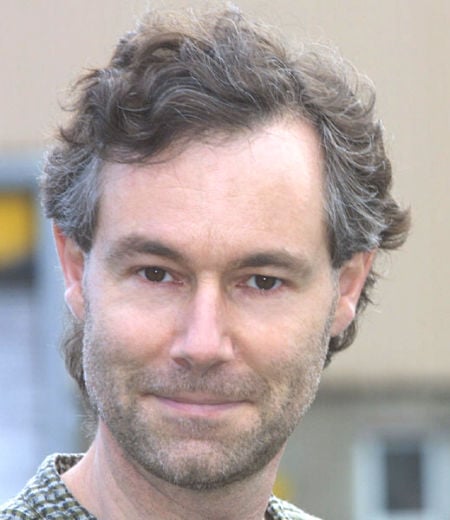
Overview
DoP Christian Sebaldt, ASC
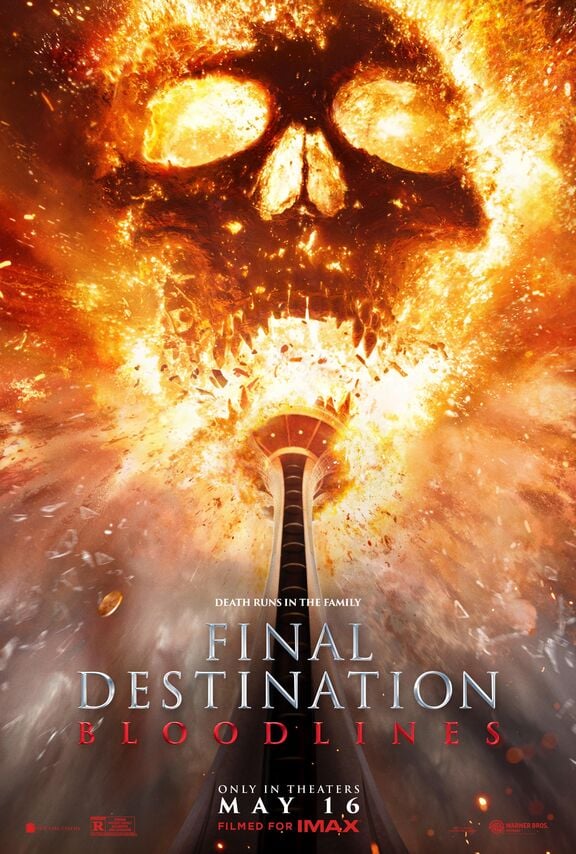
Final Destination: Bloodlines
2025 | movie
DoP Christian Sebaldt, ASC
Director Zach Lipovsky | Adam B. Stein
Leitz lens LEITZ PRIME
Camera Sony Venice 2
Production Companies Inzide Media | New Line Cinema | Practical Pictures | The Fusion Media
Distribution New Line Cinema | Warner Bros. | HKC Entertainment | TME Films | Apple TV+ | Home Box Office (HBO) | Max | Studio Distribution Services (SDS)
Awards 3 nominations total
Equipment Supplier Keslow Camera | Vancouver
Country USA
Lens used
LEITZ PRIME
Performance
